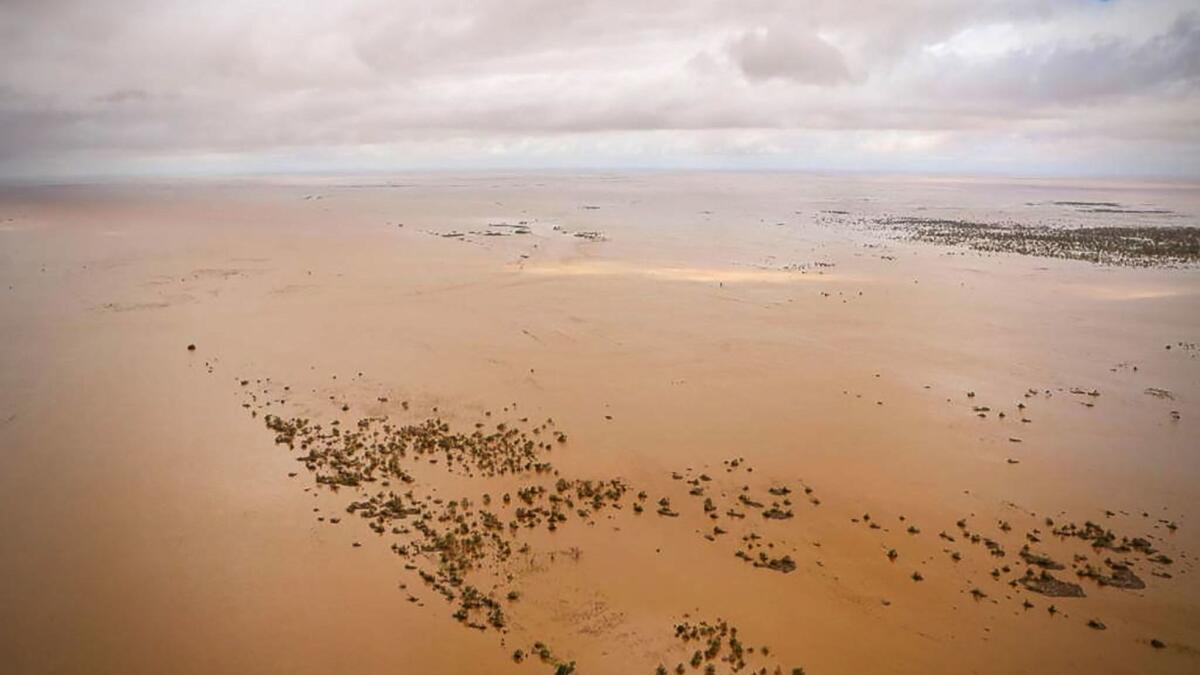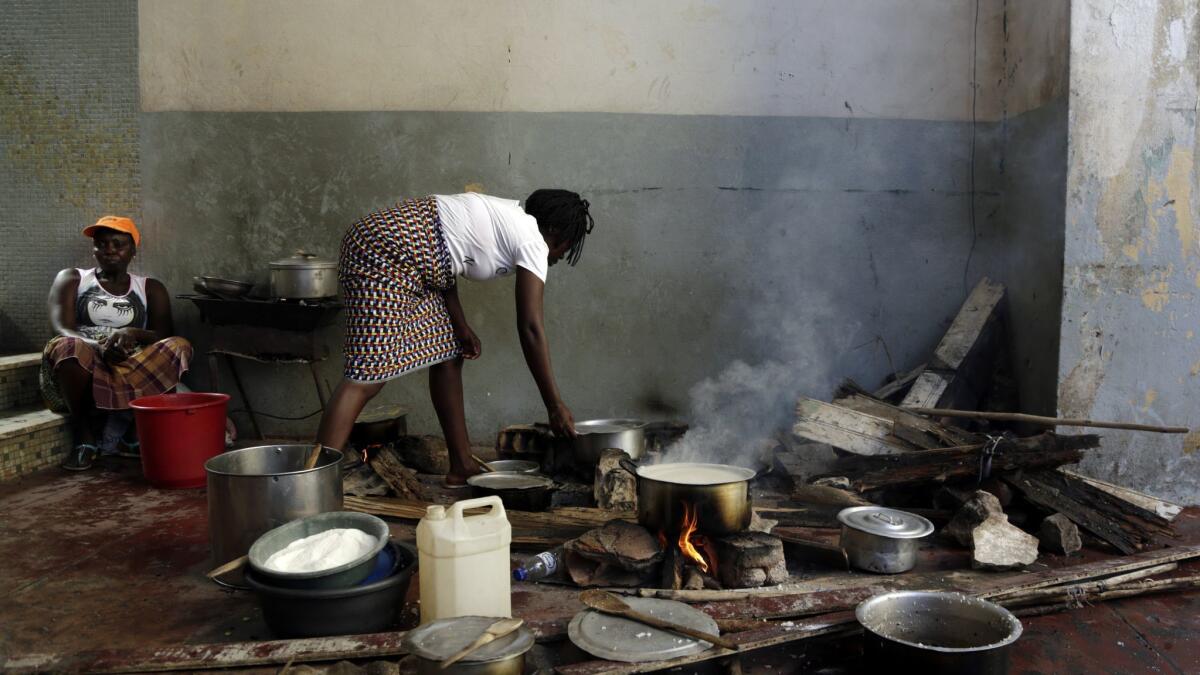‘We should brace ourselves:’ Death toll tops 600 in Africa cyclone disaster

- Share via
Reporting from BEIRA, Mozambique — With the flooding easing in parts of cyclone-stricken Mozambique, fears rose Friday as the scope of the disaster continues to be revealed.
So far, more than 600 people have been killed in Mozambique and neighboring Zimbabwe and Malawi in the disaster.
Eight days after Cyclone Idai struck southeast Africa’s Indian Ocean coast, touching off some of the worst flooding in decades, the homeless, hungry and injured slowly made their way from devastated inland areas to the port city of Beira, which was heavily damaged itself but has emerged as the nerve center for rescue efforts.
“Some were wounded. Some were bleeding,” said Julia Castigo, a Beira resident who watched them arrive. “Some had feet white like flour for being in the water for so long.”
Aid workers reported seeing many children who had been separated from their parents in the chaos.
Elhadj As Sy, secretary-general of the International Federation of Red Cross and Red Crescent Societies, said the relief efforts so far “are nowhere near the scale and magnitude of the problem,” and the humanitarian needs are likely to grow in the coming weeks and months.
“We should brace ourselves,” he said.

Helicopters set off into the rain for another day of efforts to find people clinging to rooftops and trees.
Pedro Matos, emergency coordinator for the World Food Program, said rescuers are sometimes spotting “just a hut completely surrounded by water.”
With water and sanitation systems largely destroyed, water-borne diseases are a growing concern.
“The situation is simply horrendous. There is no other way to describe it,” Sy said after touring camps for the growing number of displaced people.
“Three thousand people who are living in a school that has 15 classrooms, and six, only six, toilets. You can imagine how much we are sitting on a water and sanitation ticking bomb.”
In Zimbabwe, where roads began to open and some basic communications were set up, a fuller picture of the extent of the damage began to emerge.
The victims included a mother buried in the same grave with her child, headmasters missing together with dozens of students, illegal gold and diamond miners swept away by raging rivers and police officers washed away with their prisoners.
More to Read
Sign up for Essential California
The most important California stories and recommendations in your inbox every morning.
You may occasionally receive promotional content from the Los Angeles Times.













